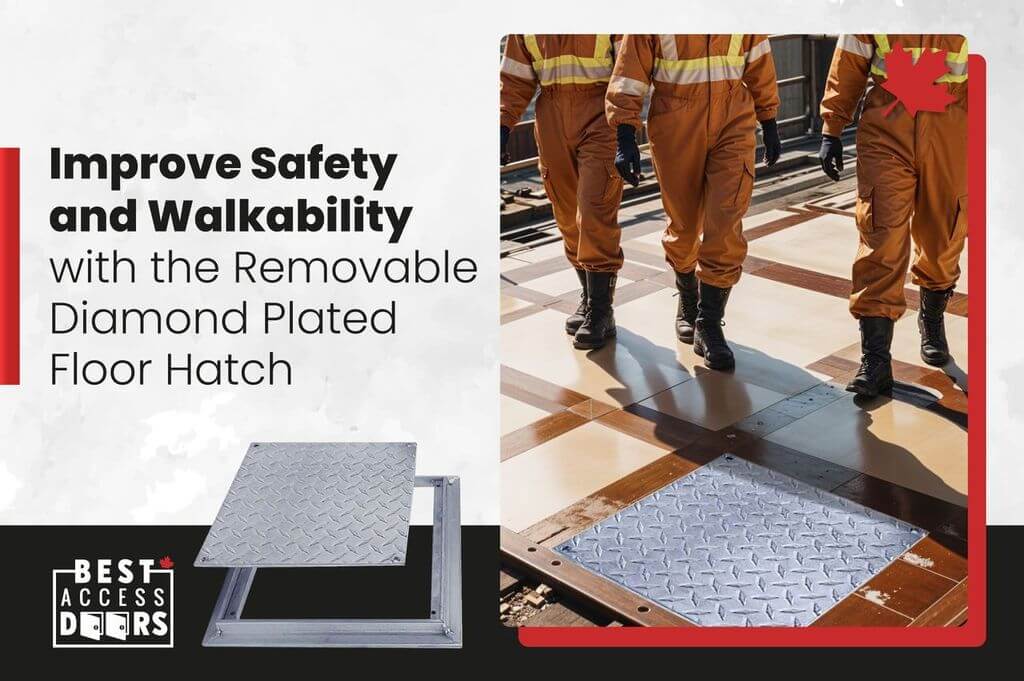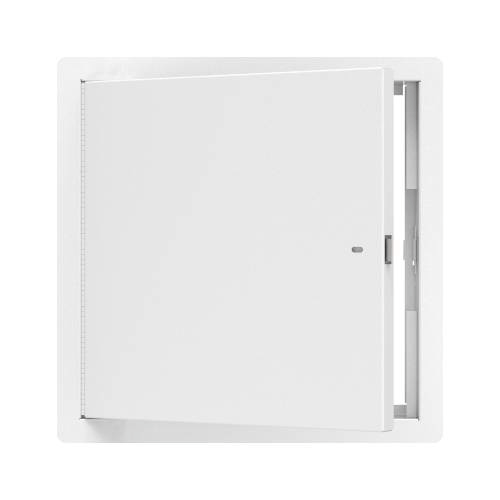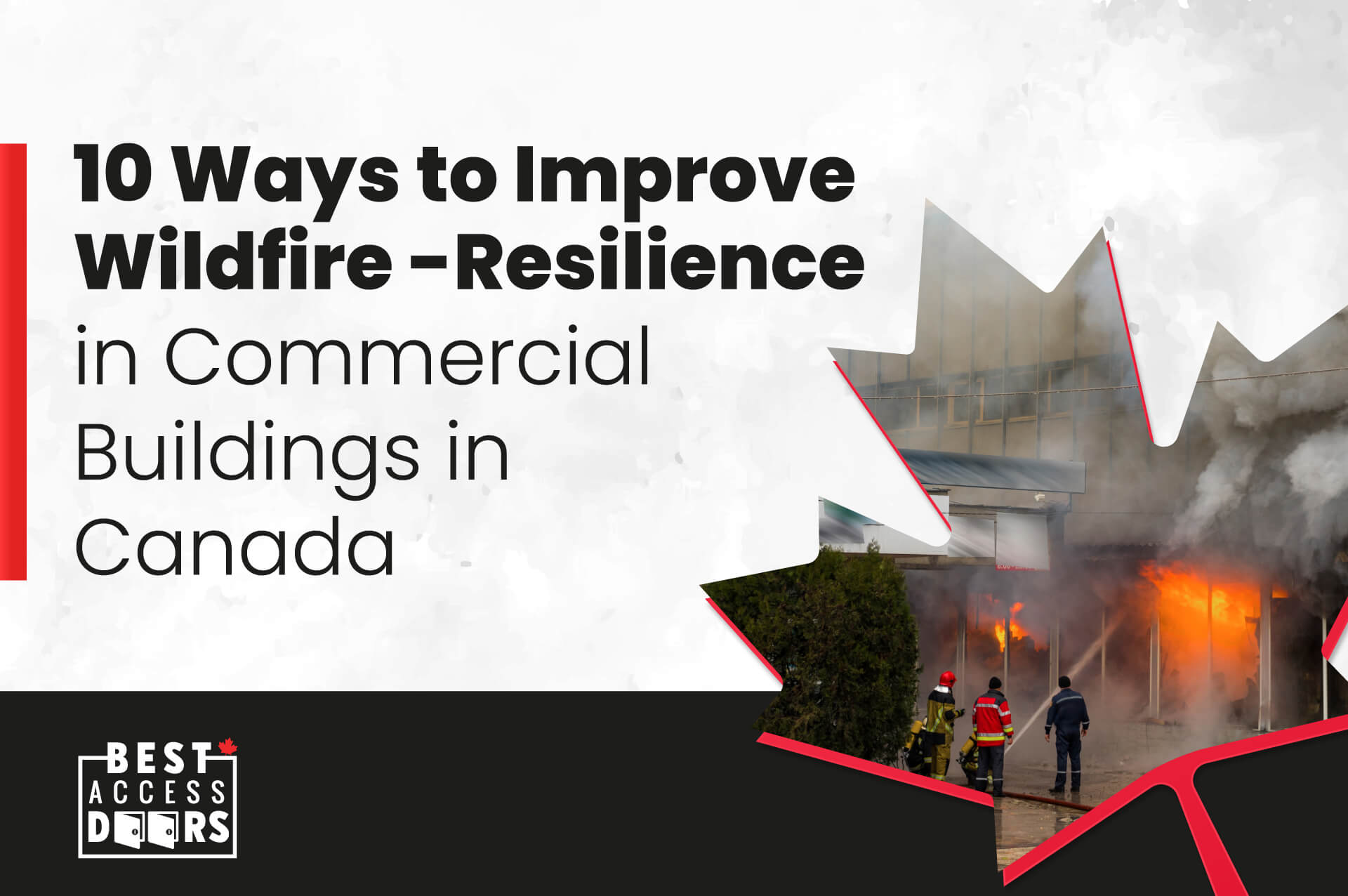10 Ways to Improve Wildfire-Resilience in Commercial Buildings in Canada Posted by Best Access Doors - Canada on 12th Jul 2023
Strengthened by extreme heat and wind, wildfires on Canada's Eastern shores, in and around Halifax, Nova Scotia, have damaged hundreds of homes and commercial structures, affecting almost 17,000 people, many evacuating.
The trail of destruction continues across the country as Quebec and Alberta's wildfires ravage properties forcing more evacuations and millions of dollars in damage. According to the Globe and Mail, experts predict Canadians can expect a new reality of a country on fire.
Imagine being a commercial builder or property owner affected by these relentless wildfires - tallying up the enormous financial toll is unprecedented. Is there anything today's construction professionals can do to plan for better wildfire resistance in the future?
Continue reading, and learn ten ways to improve wildfire resistance in commercial buildings in Canada.
#1: Follow the Canadian Wildfire-Resilience Best-Practice Checklist
FireSmart Canada™, the University of Alberta, the Canadian Home Builders' Association, and the Intact Centre on Climate Adaptation at the University of Waterloo joined forces to prepare a comprehensive checklist outlining the best practices in construction for reducing wildfire damage in Canada. The National Guide for Wildland-Urban Interface Fires aligns with this checklist regarding:
- Hazard and Exposure Assessment
- Property Protection
- Community Resilience
- Emergency Planning
The guide's goal is to help minimize the risk of wildfire property damage in wildland-urban interface areas of Canada. (National Research Council Canada, 2021). The checklist also includes links to resources that provide more detailed guidance for consideration.
Make the checklist your first stop when reviewing best practices for your company.
#2: Create a Defensible Space
The concept of defensible space in the construction industry refers to protecting the space that separates your property from trees and wildlands. The idea is to build fail-safes to slow the spread of wildfire, preventing it from reaching your property. Creating a buffer zone can help to protect your structure from direct exposure to fire or heat while authorities work to get the blaze under control.
Start by removing trees, grass, and other flammable materials within 30 meters of the structure unless there is a local code or a mandate for the minimum distance.
Your building's defensible space needs regular and proper maintenance, including trimming grass, shrubs, and tree branches nearby. If removing trees is impossible, keep branches trimmed to a minimum of two meters from your building. Be sure to properly dispose of trimmings since they will be flammable once they dry.
Keep updated with local wildfire regulations, and always check your local news for real-time wildfire guidelines and information. The Canadian Wildland Fire Situation Report provides timely updates, and you can get a visual of wildfire progression across the country by checking NASA's fire map for Canada and the USA and FireSmoke.ca's live smoke forecast map.
#3: Use Fire-Resistant Roofing Materials
Embers from wildfires can ignite the structure's combustible materials, especially if they accumulate in a specific area.
Thus, upgrading your roofing and incorporating fire-rated materials such as Class A-rated asphalt shingles and metal roofing is essential to prevent ember ignition.
Depending on their rating, fire-rated materials can withstand heat and fire up to a certain point. Some fire-rated materials can slow the fire spread for up to three (3) hours.
For example, fire-rated roof hatches and fire vents comply with local codes and fire safety standards and serve as access points for firefighters to suppress the fire from above if a fire breaks out.
Wildfire resource guides have lots of tips for improving wildfire-resistant infrastructure.
#4: Build with Fire-Resistant Materials
Canadian commercial builders in wildfire zones choose fire-resistant building materials, cladding the exterior with non-combustible siding and specialized coatings on walls, roofs, and other surfaces.
Fire-resistant screening vents, gutters, and decks will also help improve wildfire resilience by blocking embers carried by the wind from entering your commercial building's cracks and openings. Vents improve ventilation, reducing the risk of an internal ignition.
#5: Upgrade Doors and Windows
Another way to prevent ember intrusion is by installing dual-pane tempered glass windows and adequately sealing gaps in windows and fire-resistant doors.
#6: Install a Fire Safety System
Your fire safety system includes smoke detectors, fire alarms, and automatic sprinklers to help prevent and reduce the effects of fires. Commercial buildings also require specific numbers of extinguishers depending on the area.
A well-maintained fire safety system protects your building. It helps reduce the risk of fire-related injuries to the building occupants by detecting fire and suppressing it early, limiting the spread and giving occupants time to evacuate.
#7: Develop a Fire Emergency Response Plan
A fire incident can lead your business to devastating effects, including bankruptcy. A comprehensive emergency response plan can mitigate disaster. Start with a thorough risk assessment to identify fire hazards.
Outline and develop procedures for handling fire emergencies, including evacuation processes and medical response - and hold regular refresher training for your entire team.
#8: Provide an Adequate Water Supply
Your water supply also plays a vital part in enhancing wildfire resiliency. Installing a reliable water supply will help firefighters put out the fire quickly to save the building and its occupants from fire.
As a commercial builder, you must discuss the importance of storing tanks and fire hydrants with your client. Emphasize the importance of strategically installing them at accessible points around the building.
Remember, the water source needs adequate water pressure and flow rate for the firefighters to extinguish the fire efficiently.
#9: Collaborate with Local Authorities
Consulting with local authorities and the fire department can help you develop a streamlined wildfire resiliency strategy. Get acquainted with new fire preparedness programs, training, and other fire emergency strategies to safeguard the property and its occupants.
Regularly attend community meetings and fire advisory conferences to gain more insights on preventing wildfires from damaging your commercial building.
#10: Install Fire-Rated Access Panels
Fire-rated access doors can help to slow the spread of fire for a limited time. Consult with access door experts and check local building codes to choose the fire-rated access door that offers the highest protection level for your commercial building's essential components. BAC-PFI is a best-selling insulated fire-rated access panel favored by commercial builders for its solid steel construction, thick mineral wool insulation, self-closing, self-latching features, and full compliance with UL and NFPA standards.
BAC-PFI's 16-gauge cold rolled steel frame, 20-gauge galvanneal steel door and 2" mineral wool insulation enhance the fire rating of your fire-rated walls and ceilings by helping to withstand exposure to high heat and flames for a limited time without compromising structural design and integrity. The thick insulation slows flames from penetrating the building's interior, helping to keep components intact and functional for a set amount of time.
BAC-PFI also features an automatic panel closer and self-latching tool-key or ring-operated slam latch, which will automatically close to help slow the damage to cables, wires, and HVAC from flames, smoke, and heat.
Are You Prepared for Canada’s New Reality?
In Canada, where wildfires are the new reality, builders, and property owners wisely implement these ten innovative best practices to help reduce the threat of damage to commercial properties, lessen financial risks, help protect building occupants, and contribute to a more resilient Canada.
For more information on fire safety products or a quote on fire-rated access doors, including BAC-PFI, call Best Access Doors product experts at 1-800-483-0823. We also offer financing for large-scale solutions. Let us know how we can help!






